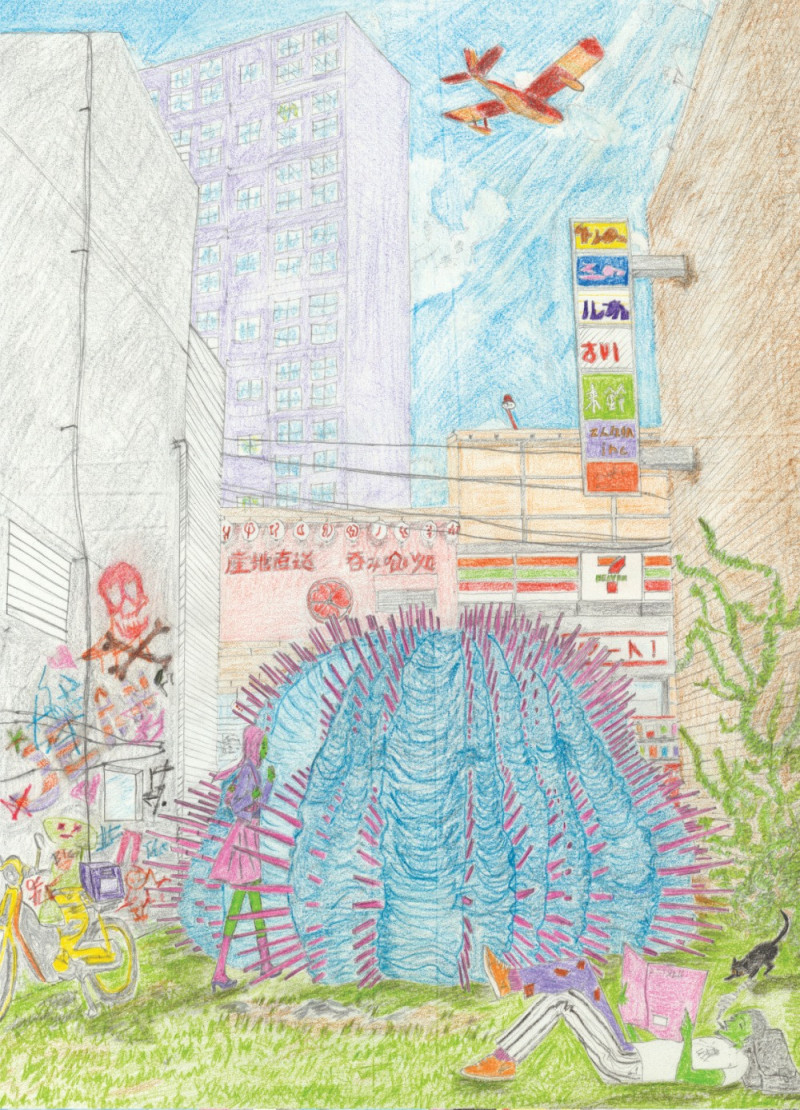5 key facts about this project
The design takes inspiration from Haruki Murakami's "Kafka on the Shore," situated in a setting that encourages deep thought and reflection. The intent is to create an environment where users can traverse the boundaries between their conscious and subconscious minds. Each space is structured to foster meditation and promote a connection between individuals and their surroundings.
Conceptual Framework
The architecture is based on the concept of "hylozoa," likened to peculiar organisms that illustrate the project's goal of forming a space conducive to contemplation. The exterior features spiky extensions that not only captivate attention but also invite exploration. These elements are designed to stimulate curiosity and guide users toward a more profound engagement with their inner selves.
Spatial Experience
Inside, the design prioritizes minimizing sensory distractions to create a peaceful space for thought. This approach aligns with the principles of meditation, allowing users to turn their focus inward. The spatial configuration promotes movement, encouraging individual exploration and personal interpretation of the experience as users connect with their thoughts.
Modular Adaptability
Modularity is a significant aspect of the structure, featuring adaptable elements that can reshape according to different site requirements. The design changes in size and form to accommodate various needs. This flexibility enhances the usability of the space, ensuring that it meets the diverse expectations of those who enter while remaining true to its core intentions.
Clean lines and organic forms play a vital role in promoting a relationship with the natural surroundings. The design embodies a focus on introspection and engagement, where every detail contributes to a tranquil atmosphere. Each element in the space invites users to pause, think, and reflect, culminating in a sanctuary for personal exploration.



















































